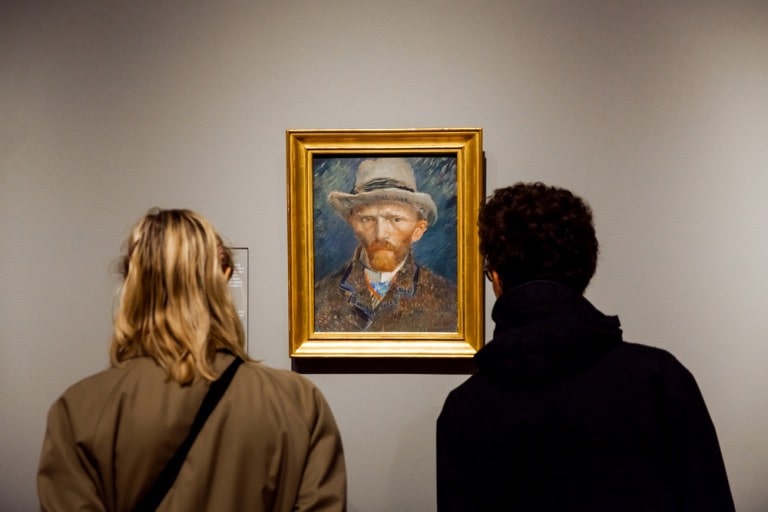Van Gogh is one of the most widely-known names in all of art, even now, well over 100 years since his death. Who was the man, and what were some of the inspirations and mysteries that informed his work? Was Van Gogh a troubled genius, as so many seem to think?
The influence of Vincent van Gogh’s work goes far beyond just contemporary artists, as signatures of his work can be found in so many visual arts that didn’t even exist when he did. For instance, the bright colors found in the world of disco can be said to stem from this famous artist, and the artist’s life itself is still the subject of lots of cinematic endeavors, including Julian Schnabel’s At Eternity’s Gate.
Let’s explore this icon and some of the myths and stories behind the masterpieces.
Van Gogh’s development
Van Gogh’s style changed hugely throughout his life – having started to learn the fundamentals of art at school, mainly using watercolors, he eventually shifted to oil paints, and in his short existence, different spells of his life can reflect a paradigm shift. When he spent time in Paris, for instance, he was exposed to a lot of modern art and this inspired him to start working with shorter brush strokes and even use bright colors unlike those he had previously been drawn to.
Van Gogh’s subjects also changed when he spent time in these places and he was exposed to new inspiration. Over his career, Van Gogh finished over 2,000 artworks and paintings, so naturally much of it was in reaction to the world around him.
Sunflowers: a series of paintings
Sunflowers was in fact a series of paintings, even though it has given us one of the best-known pieces of artwork of all time. While some other artists focused on more floral and decorative flowers, Van Gogh studied and even obsessed with the sunflower and its charms. He infamously quoted: “You know that Jeannin has the peony, Quost has the hollyhock, but I have the sunflower, in a way.”
Sunflowers, as we know it, comes from a series between 1888 and 1889, and the artist may well have been working on similar themes earlier, which did not see the light of day. Though many consider this to be one of the greatest pieces of artwork of all time, not all know that it is part of a series, with different versions in different galleries all over the world.
Vincent Van Gogh even spoke of his desire to create seven or nine different versions of the work to be displayed together, and the replicas kept coming throughout this prolific period, including reworked versions with more flowers in the vase than in the original.
The Starry Night – painting from an asylum
After some challenging and well-documented life events that caused him to cut and mutilate his own ear, Van Gogh took himself to a lunatic asylum that was inside a former monastery, as he sought help.
This was a productive time for him, at Saint-Rémy-de-Provence, and he even had a second room there that he used as his studio. It is where he created The Starry Night, a painting that was a study of a starry sky above.
Another interesting tale of the background to this is that it was not painted at night. Van Gogh was looking at the scene during the daytime when he created the artwork, but was inspired by the stars he could vividly see at night when he was in the asylum.
Another legend and mystery behind this famous painting is the fact that the artist didn’t particularly like it. He said of the work in a letter: “All in all the only things I consider a little good in it are the Wheatfield, the Mountain, the Orchard, the Olive trees with the blue hills and the Portrait and the Entrance to the quarry, and the rest says nothing to me.”
Conclusion
Van Gogh’s life story is a sad one in many ways. In 1890, he was getting unparalleled acclaim, having featured in the Société des Artistes Indépendants in the Pavillon de la Ville de Paris, and had been named as the most impressive artist thereby contemporaries such as Claude Monet, but it was in this year that Van Gogh passed away, living to the age of just 37. His brother, whose correspondence is key in knowing his life story, died within months of this.
